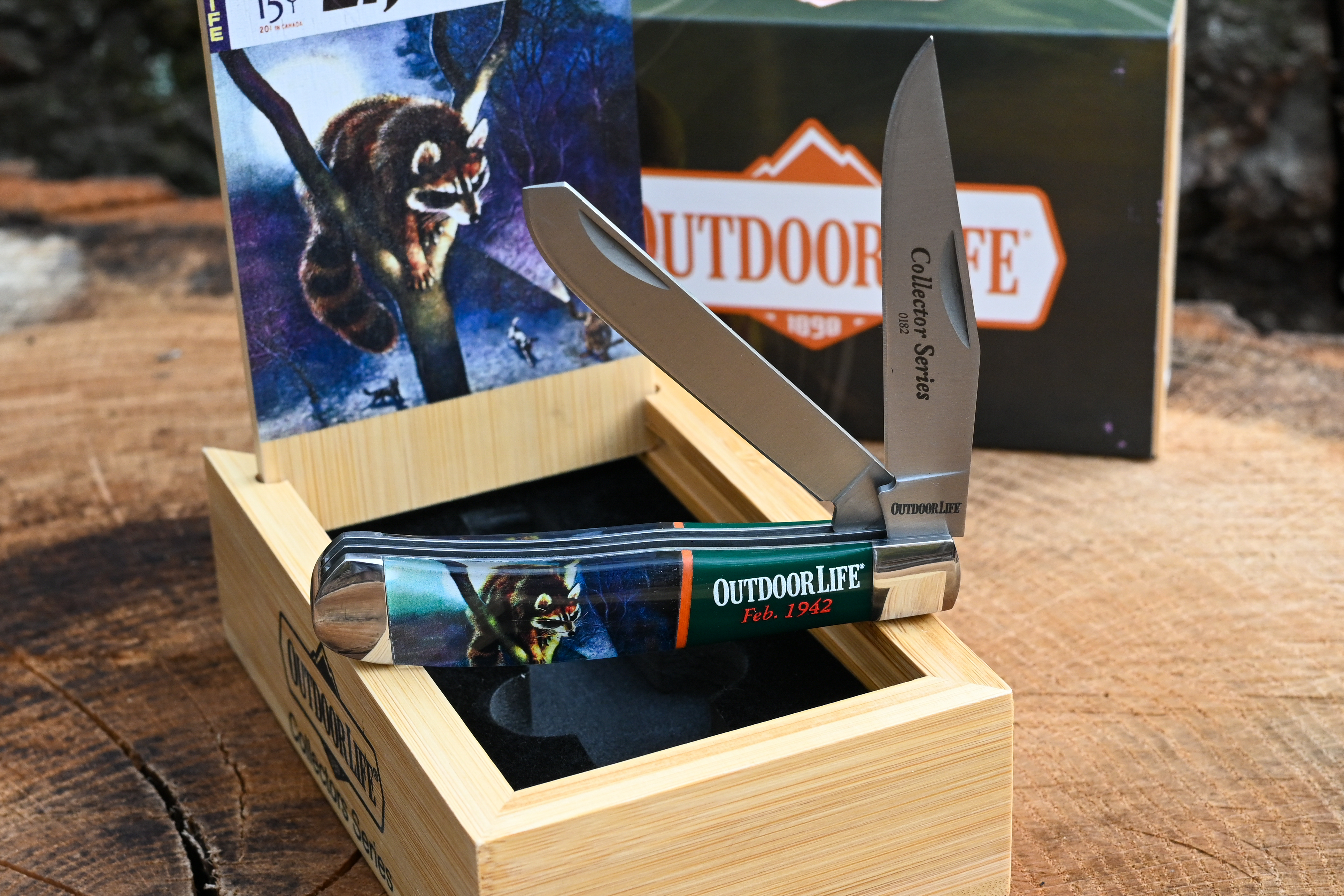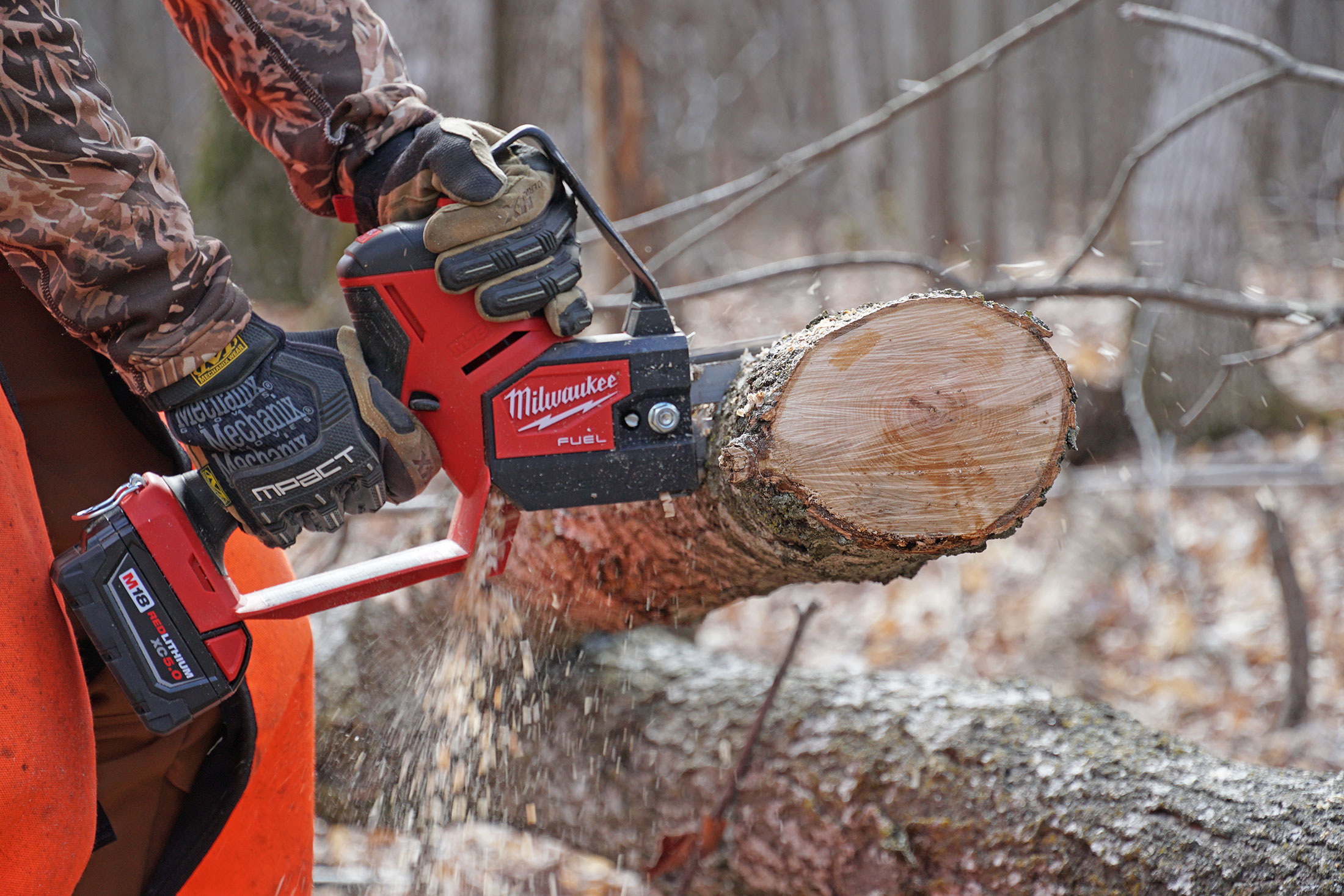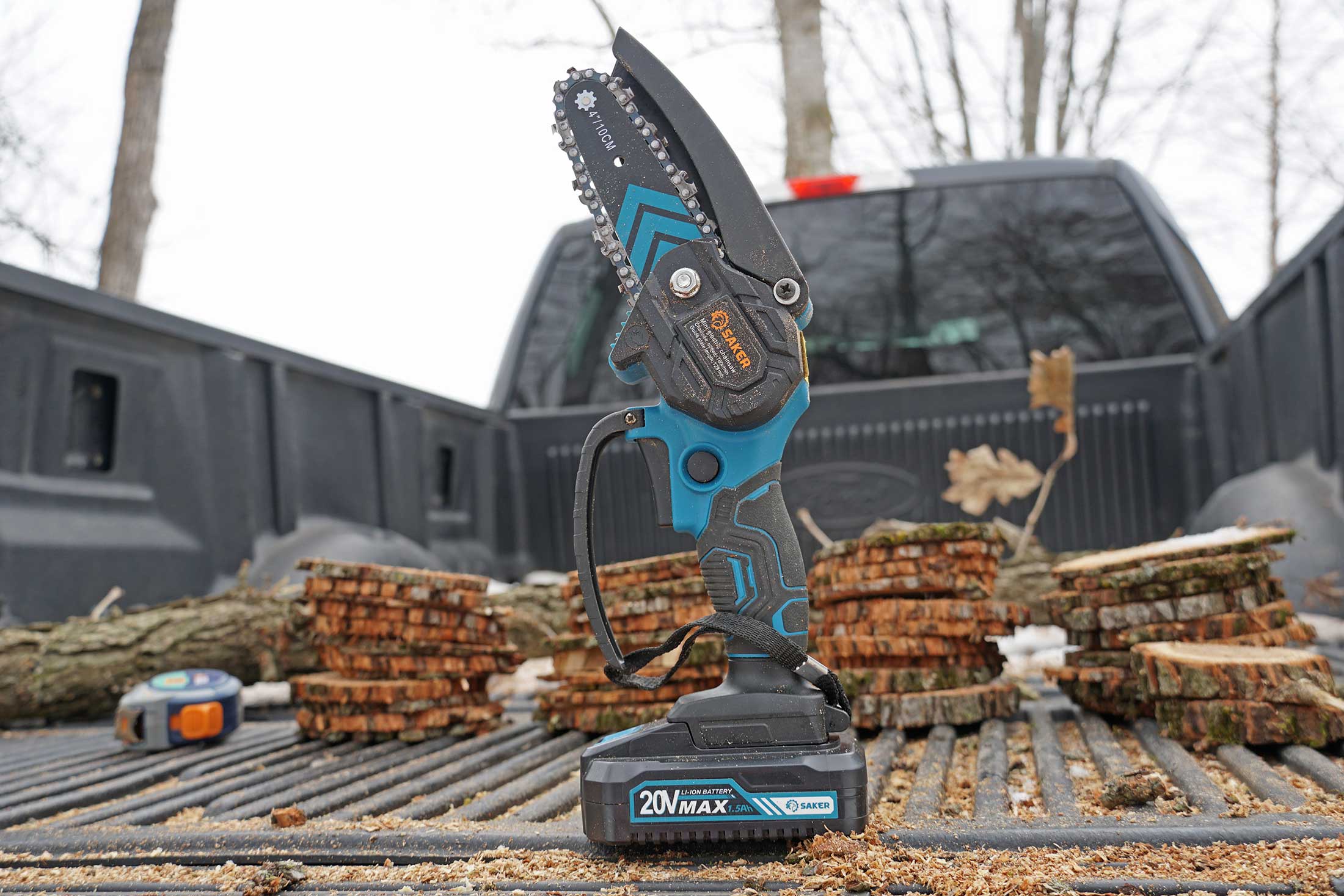A Look at the Outdoor Life Collectors Knife

We may earn revenue from the products available on this page and participate in affiliate programs. Learn More ›
In Outdoor Life‘s 127-year history there have been many iconic issues. If you love those old magazines as much as I do, you can collect old issues and buy vintage cover prints to own a piece of history. Or you can get one of the Outdoor Life Collector Series knives, which have OL magazine covers from 1942 printed on them. I recently added one to my knife collection and put it use as a daily cary knife. Here’s a look at the knife and why I think it’s cool.
See It
- Closed Length: 4.125 inches
- Blade Length: 3.5 inches
- Blade Type: Clip Point and Spey Blade
- Lock Type: Friction lock
- Handle: Printed acrylic
- Includes bamboo gift box
- Price: $50
The Cover
The Outdoor Life July 1942 Trapper Collectors Set knife handle features a polished bolster, the Outdoor Life logo, the issue date, and the magazine cover. There are two magazine covers available: a February 1942 cover that features a raccoon on a limb and an April 1942 cover that features a grandfather and grandson looking at a fishing rod.
The cover image is beneath a clear portion of the scale that reveals the illustration below, similar to the sweetheart pistol grips created by U.S. soldiers during World War II.
A larger version of the full magazine cover is depicted on the sliding top to the bamboo box.
Read Next: We Launched a Knife Collection: The 12 New Outdoor Life Knives
The Blades
The classic trapper-pattern slip joint is robust and houses two 3.5-inch satin-finished stainless steel blades. One is a clip-point blade for precision cutting with “Collector Series, ” a unique serial number laser etched, and “Outdoor Life” engraved near the base. There’s also an all-purpose spey blade, perfect for all sorts of tasks
The trapper pattern folder goes back to the early 20th century during the so-called golden age of American cutlery. Through the years, they’ve been made in various sizes, from tiny keychain knives to larger field knives, by many manufacturers, but they almost always include the classic combo of a clip and spey.
Chances are, you had a grandfather or uncle who eternally carried a version of this knife in their pocket at all times along with loose change or their keys and a linty roll of Certs.
This unpretentious folder was the EDC do-it-all pocket knife of the Greatest Generation, and this handsome new version is just as versatile and just as useful. Who knows how many GIs fought in Europe and the Pacific with a trapper in their pocket brought from home or sent in a care package by loved ones.
Using the Knife
After spending some time with this new, modern version of the trapper, I can attest that the nostalgia factor is high. The classic stainless steel blades hold an edge well and are easy to sharpen. While it isn’t the sexiest cutting task in the world, cutting cardboard boxes is an excellent way of knowing exactly how much work you can get out of an edge before it needs some honing. The spey blade is great for boxes, tape, string, and anything else you can think of, and it slices extremely well.
At 3.5 inches, the blades and the knife itself, which measures just over 4 inches closed, is the perfect size; it’s not so small that it feels like a pen knife when you’re trying to do something bushcrafty, while being just the right size to ride in a pocket without the need for a clip. And since it’s mostly constructed of steel, it has a truly satisfying weight to it.
Both blades hold up well to use, and even when they dulled, they were simple to hone with a ceramic rod. That’s the magic of a simple stainless steel blade; it’s not too hard and not too soft, and it’s just right for most people in their day-to-day lives.
There’s also more history to the components of this knife than the trapper style itself. The classic clip point blade goes back to antiquity because it’s a fairly simple way to create a sharp, pointy, and strong blade tip; the spey blade also has some significant and lengthy history. It has a small belly that abruptly curves, creating a tip that’s barely there. As the name implies, it was originally used to spey female livestock and to castrate males.
Final Thoughts
The Outdoor Life July 1942 Trapper Collectors Set is great for collecting and will look handsome with its box on a shelf or desk along with the other entries in the series, but if you want to harken back to a simpler time when folders were true pocket knives and carry a classic outdoorsman’s jackknife, well, it will fit that bill, too. You’ll find it endlessly useful, and when someone spots the unique scales, you’ll undoubtedly get questions and a chance to show it off.
Read the full article here







